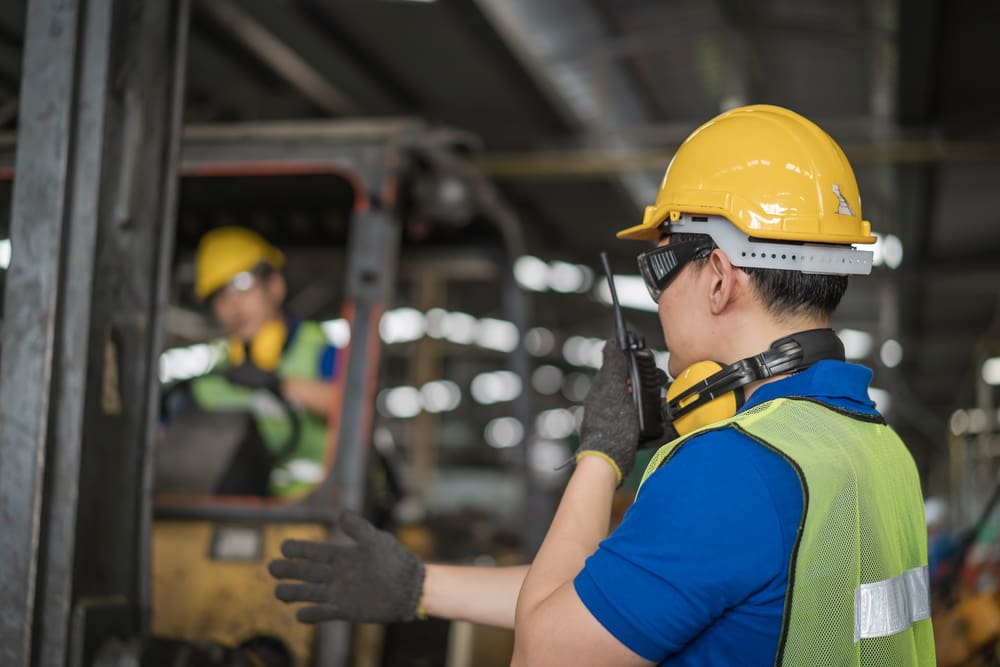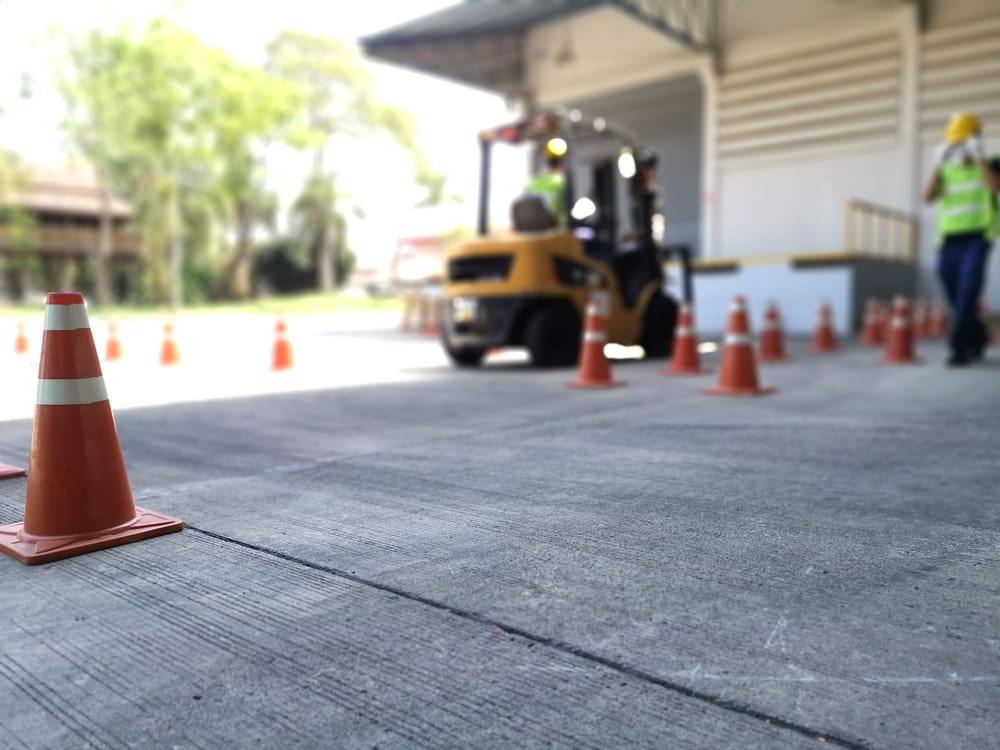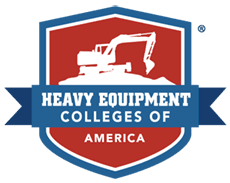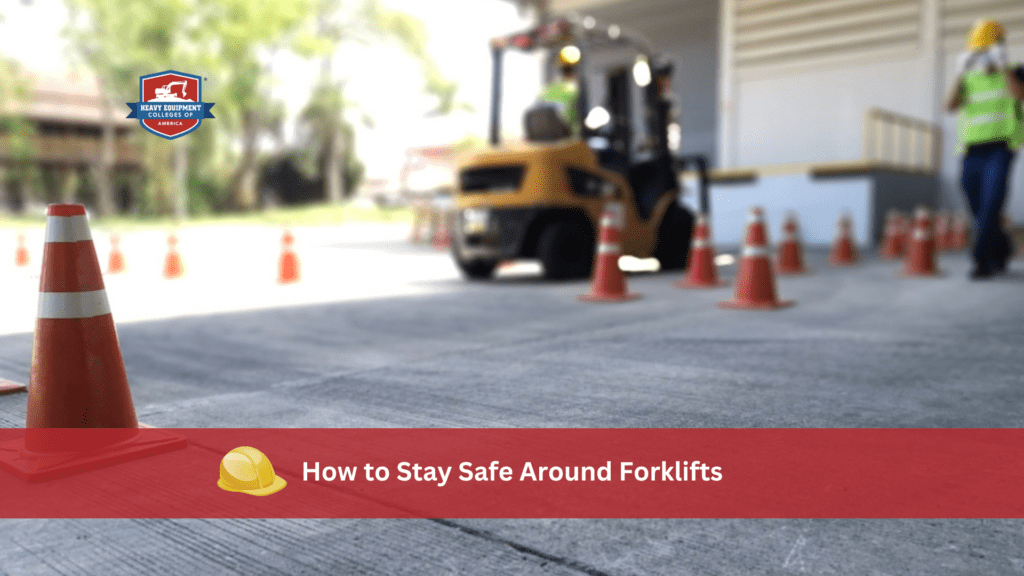Forklifts are imperative in many construction work zones, however, they are often dangerous, especially for nearby pedestrians. According to OSHA, over 20% of forklift accidents involve pedestrians. Oftentimes, these accidents occur because of limited forklift visibility, their weight, and their ability to cause severe harm while moving slowly. Regular collisions and forklift runovers prove just how important it is to follow safety precautions.
When it comes to remaining safe around forklifts, it’s all about keeping a safe distance. Staying alert and avoiding areas where forklifts are working is what will keep you out of harm’s way. It’s also the operator’s responsibility to ensure that they operate safely, regularly signaling their movements. Having simple things like designated walkways, clear signs, and routine training goes a long way in preventing accidents and damage.
Let’s explore forklift accident stats, what causes them, establishing clear signals, and how to operate the vehicles safely. We’ll dive into practical tips that ensure you keep a safe distance, while also understanding why a safety-first work zone culture is essential to keeping danger at bay.
Table of Contents
How to Be Safe Around Forklifts?
In addition to proactive measures, technological advancements can also play a crucial role in enhancing forklift safety. Implementing proximity sensors, collision avoidance systems, and speed limiters on forklifts can help mitigate the risk of accidents caused by human error or oversight. Furthermore, investing in ergonomic designs and safety features for forklifts can minimize the physical strain on operators, reducing the likelihood of accidents due to fatigue or discomfort. Regular maintenance and inspection of forklifts are also essential to ensure that they are operating safely and efficiently.
Fostering a culture of continuous improvement and learning is key to sustaining a safe workplace environment. Encouraging open communication channels where employees feel empowered to voice their concerns or suggestions for improving safety can lead to innovative solutions and a shared commitment to safety excellence. Providing incentives or recognition for adhering to safety protocols can further reinforce positive behaviors and promote a culture of safety awareness.
Ultimately, prioritizing safety around forklifts requires a multifaceted approach that encompasses technological advancements, ergonomic considerations, continuous learning, and a supportive organizational culture.

1. Understanding the Risks
It’s important to realize that forklifts come with many risks, especially the risk of serious accidents that include pedestrians being struck by falling debris or getting stuck between the forklift and nearby objects.
Oftentimes, these accidents are severe and occasionally, fatal. Limited visibility, heavy loads, and powerful machinery are the cause of many accidents. This is why educating individuals about taking caution around such machinery is crucial in avoiding devastating consequences. Foreman and certified operators must recognize the risks and stay hyper-vigilant at all times.
2. What is a Safe Distance?
Safety doesn’t come with a one-size-fits-all approach. However, keeping a healthy distance from a forklift as a pedestrian is a surefire way to limit your chances of injury.
It’s important to note that the forklift’s size, speed, load, and environment contribute to the potential for an accident. However, a general rule of thumb is that individuals should at least stay the length of the forklift plus its load away, or in more direct terms, 10 feet away from a moving forklift.
Staying out of the forklift driver’s blind spots and travel path will also aid in keeping a safe environment to avoid unexpected accidents.
3. Pedestrian Zones
Mapping out designated walkways and crossing areas in cities and work areas is a clear way to create a safety-first environment where forklifts operate. These distinct zones separate pedestrians from forklift traffic, reducing the risk of unexpected damage.
Ensuring that all parties adhere to the designated zones limits the risk of accidents, preventing future legal issues and creating a safer working area.

4. Visual Cues
Posting visual cues that a forklift is in operation nearby is crucial in creating a safe environment. Flashing lights, backup alarms, and reflective clothing worn by workers and operators can help pedestrians take note of their surroundings.
Educating license holders and drivers about forklift operators’ hand signals and movements can help traffic safely navigate the construction around them. It’s important to note that individuals should always attempt to make eye contact with operators before crossing their paths to ensure each party is aware of each other’s presence.
5. Communication
Clear communication among forklift operators, construction crews, and pedestrians is paramount for all-around safety. Vocalizing risks, using hand signals, and issuing warnings on radio stations is a great way to alert the public that forklift activity is present in certain traffic areas.
Promoting a culture of clear communication and communal safety responsibility reduces accident risk and empowers others to take ownership of their own and others’ safety.
6. Right of Way
Educating drivers that forklifts often have the right of way in designed work areas could potentially reduce the risk of traffic collisions. While pedestrians have the right of way in certain situations, pedestrians should always yield to forklifts and wait to proceed.
When it comes to heavy equipment like forklifts, it’s important to exercise and remain aware of approaching risks. Respecting the right of way and remaining alert increases the potential for pedestrians and forklift operators to create a safe working environment for all involved.
Technology Advancements in the Heavy Equipment Industry
We’ve put together a guide outlining how technology in the construction industry has changed over time, how today’s technology improves processes and outcomes, and realistic challenges to address moving forward.
Importance of Forklift Safety Training
Forklift safety training is imperative to reducing accident risk and pedestrian harm. It ensures a workplace can run safely and provides operators with the skills to manage heavy equipment. This includes processes like load management, maneuvering techniques, and pre-operational checks that identify forklift malfunctions.
Educating pedestrians about forklift safety is equally as important. Teaching drivers and pedestrians about traffic safety signals and the importance of keeping their distance can routinely remind people that staying alert, using designated walkways and effective communication are the keys to safe working conditions.
Offering regular courses for both forklift operators and license-holding drivers keeps safety practices current and allows room for the opportunity to address up-and-coming equipment protocol. These courses also offer the option to learn from past mistakes that did or could have resulted in an accident.
Prioritizing routine safety training creates a safety-first culture that encourages employees to take ownership of their safety and others. Investing in operating training not only protects employees but also boosts operating confidence and efficiency while reducing accident risk.
Become a Certified Forklift Operator
Becoming a trained and certified forklift operator with Heavy Equipment College opens up opportunities for your future in various industries. Through our comprehensive training and certification programs, our students gain the skills and knowledge necessary to operate forklifts and other machinery. Your future employers value certified operators who prioritize safety in work zones.
By enrolling in HEC, you will not only gain the skills to improve your job prospects but also the knowledge to contribute to a safer working environment. Take the first step towards a rewarding career as a certified forklift operator with Heavy Equipment College today.

